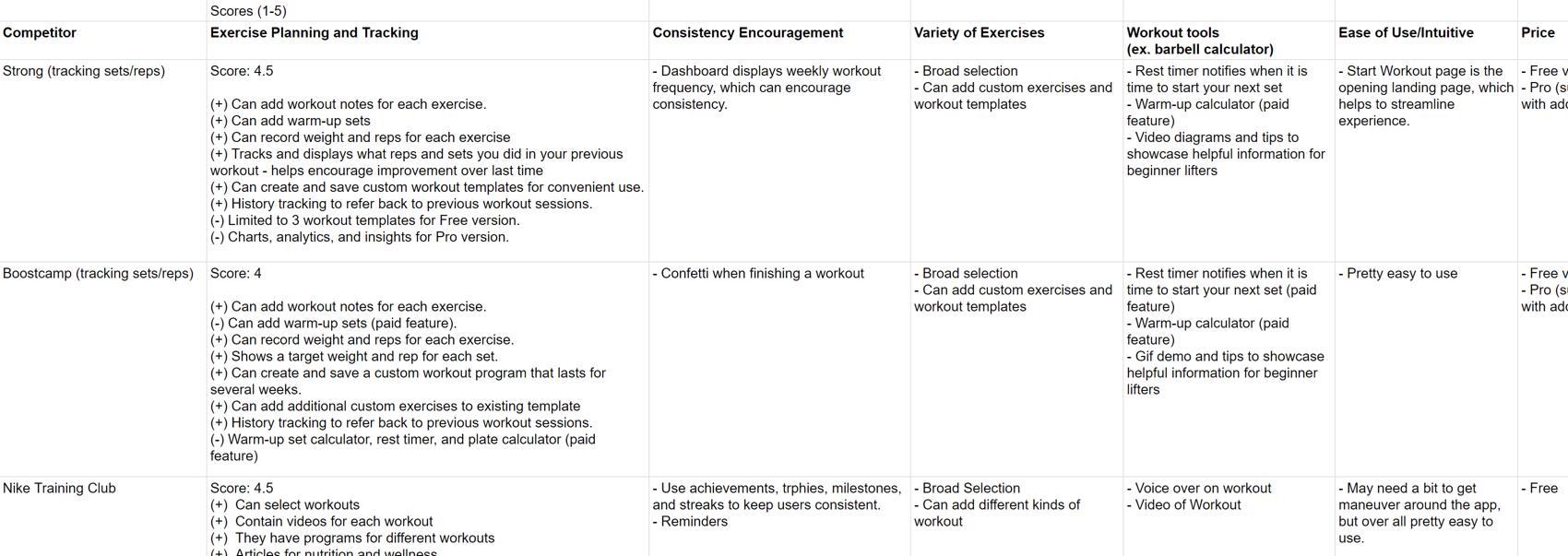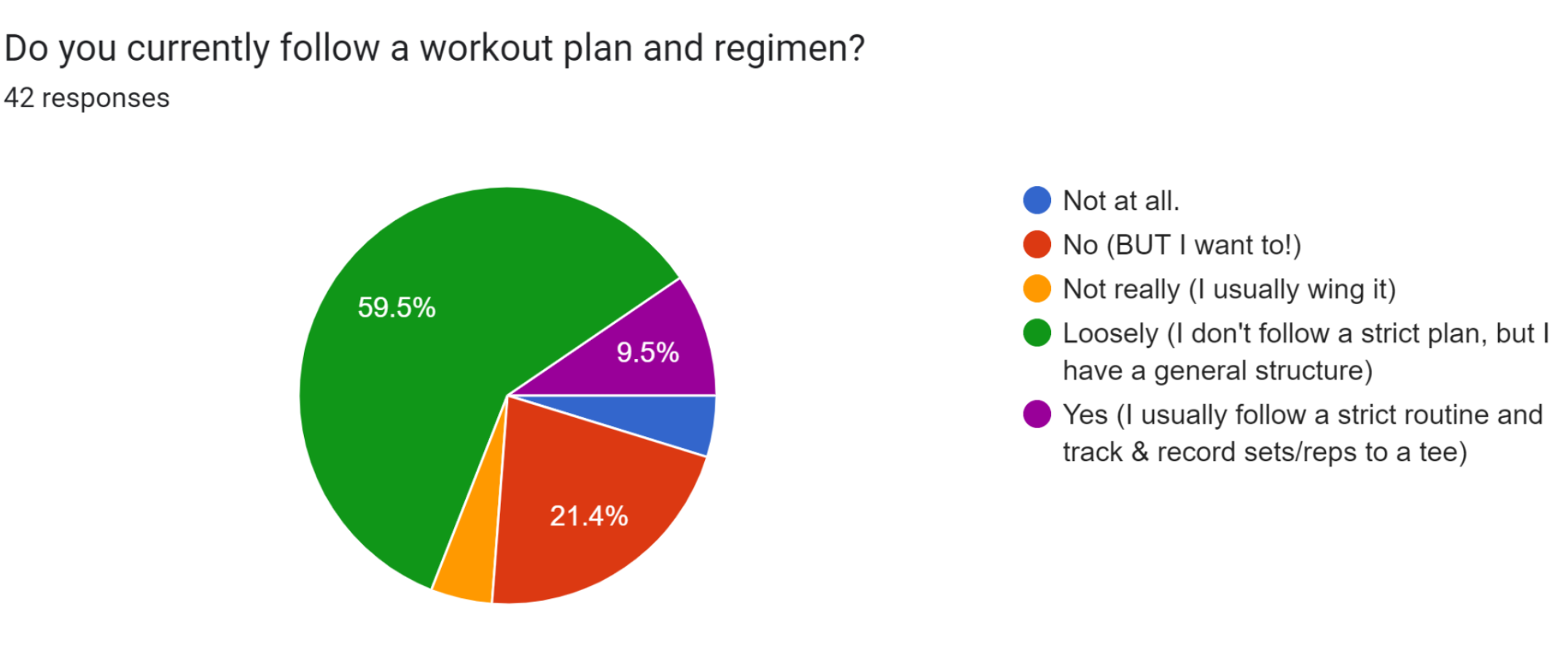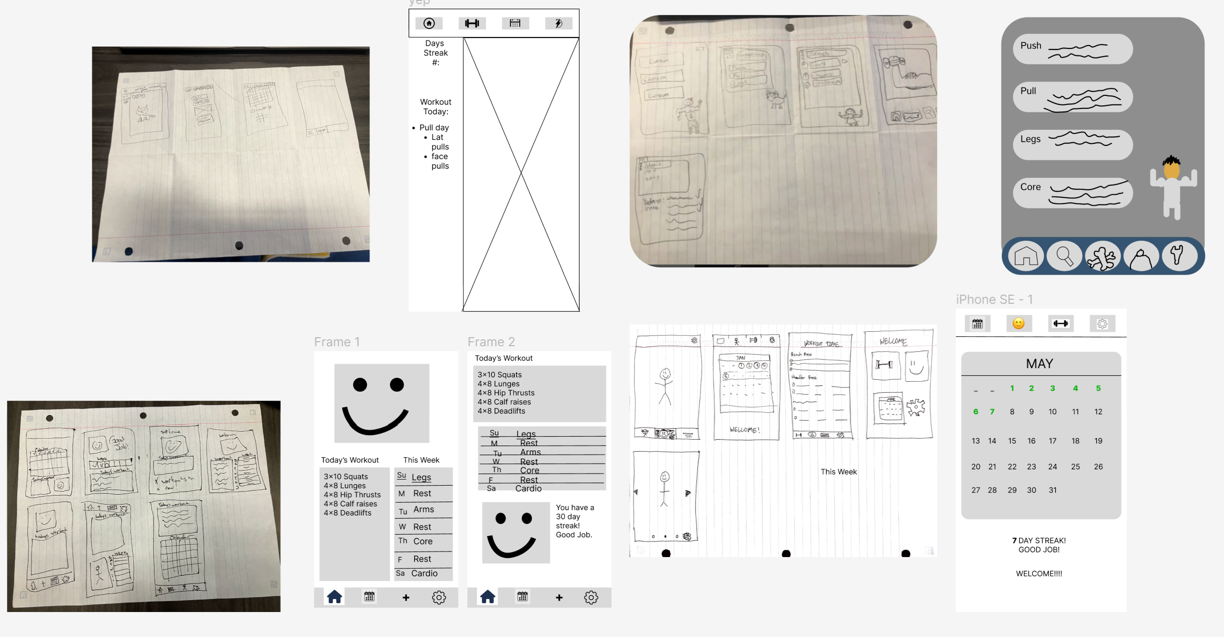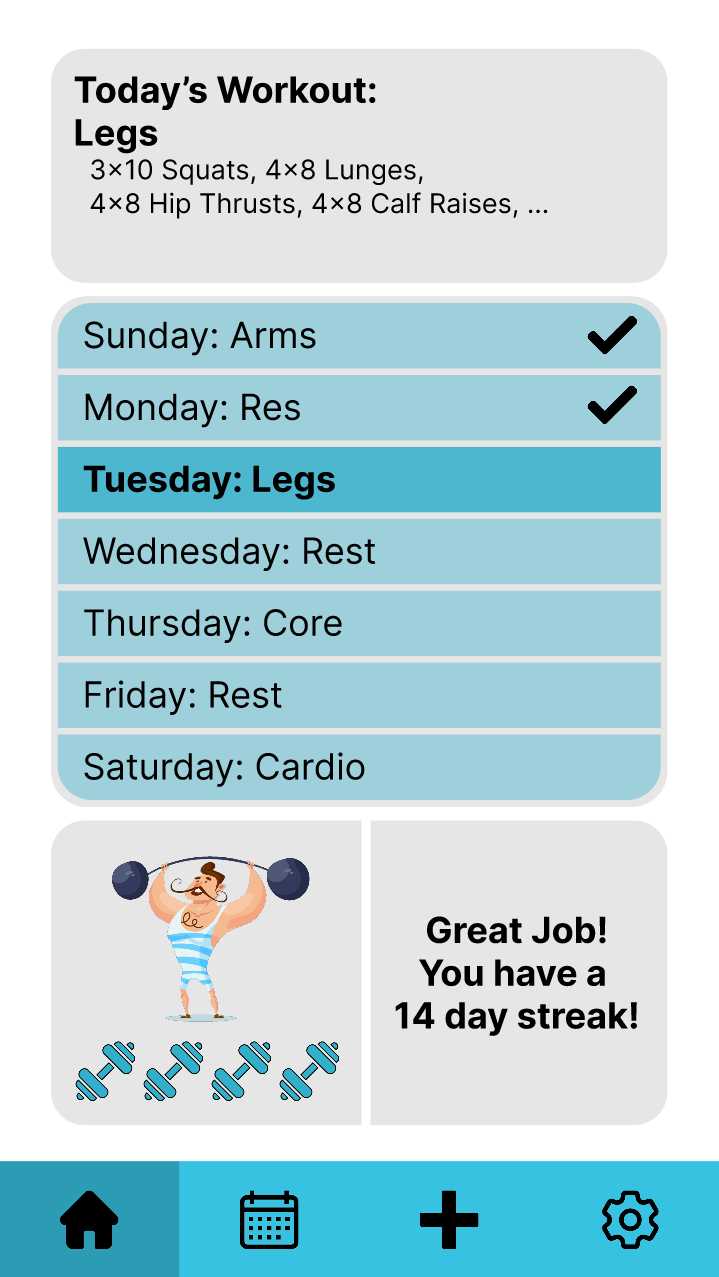FitFrenzy
Spring 2024 - 3 months
FitFrenzy is a workout app designed by a team of 5 UCI students for the Project in Human-Computer Interaction course.
Problem Statement
Our first step in the project was figuring out an existing problem that we all were interested in solving. To do this we researched a few different possibilities, and crafted a problem statement. As a group, we came to the consensus that while there are plenty of existing workout apps, almost none of them had any focus on solving one of the key problems beginners face when trying to improve their health. That is why our app focuses on the issue of motivation, and many of its features are centered around keeping users motivated and removing as many barriers as possible to staying consistent with one's goals.
Competitive Analysis

As part of our research while defining our problem statement, we looked at a number of existing workout apps to see what strengths and weaknesses each had, what differentiated them, and what could set ours apart. To do this competitive analysis, we created a spreadsheet where we could break down each competitor on defined categories. This helped us discover that while there are many good options already on the market, none had both a sufficiently streamlined, beginner friendly experience, and adequate motivational aids.
Surveys

To gather information on what people want in a workout app, and more generally from exercising, we sent out a survey that 42 respondents filled out. The survey included demographic questions, as well as questions about goals, experience level, differences between desires to exercise and actual exercise levels, and motivation blockers to working out. From this, we were able to find that only 24% of respondents reported meeting their own goals for consistency, and as highlighted in the above chart, very few have a regular plan that they follow.
When asked what the biggest hurdles to meeting their workout goals were, being too busy was by far the biggest problem, with 83% of respondents highlighting it as one of their blockers. While no workout app can fix this, we chose to focus on the next 4 most cited reasons: inconvenience, intimidation, forgetting, and not knowing where to start. These reasons were mentioned by 41%, 36%, 23%, and 21% of survey respondents respectively.
Lo-Fi Wireframe Prototyping

As we developed a better understanding of how specifically our app could solve the problems of people new to workout plans, we focused on generating many low investment ideas of how our main app page could look. To do this, we started with paper sketches, and slightly refined the best ones to Figma wireframes.
Hi-Fi Figma Prototyping

Once we finished wireframing, we began visualizing what the polished version of our home page would look like. We decided on a color scheme and app feel that would be as inviting as possible. We also developed a more defined user flow for each core task. Our figma file included links between pages, and example flows for features like building a workout, and tracking sets and reps live during a workout.